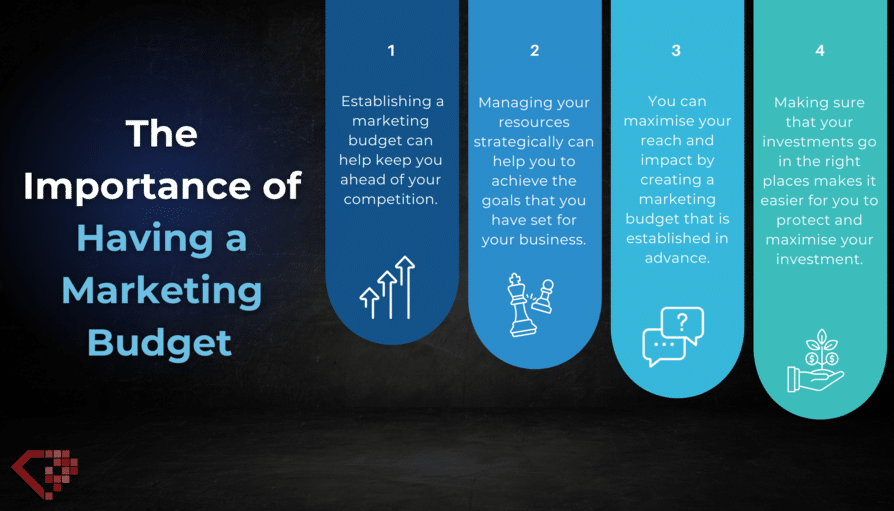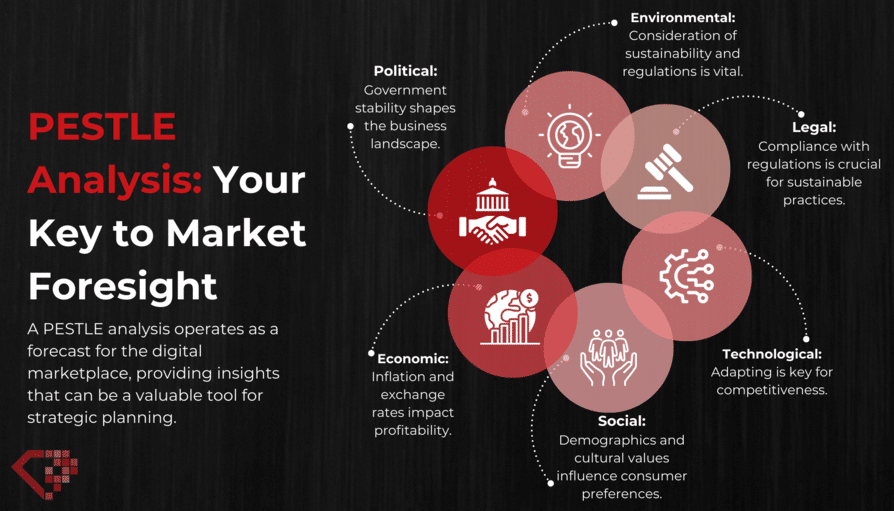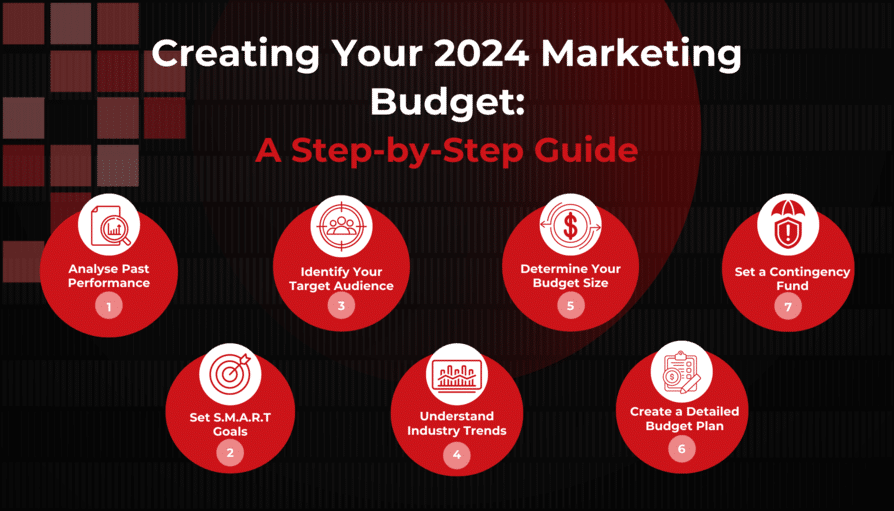The digital landscape is always shifting. New platforms emerge, algorithms evolve, and consumer habits can change with dizzying speed. To thrive in 2024, businesses need a sturdy compass: a digital marketing budget plan.
But with an unpredictable global economy, crafting such a plan can feel daunting. Where do you even begin? Right here, with a clear understanding that investing in digital marketing, even in uncertain times, is essential.
Think of your budget as the fuel that propels your growth. It allocates resources, tracks progress, and ultimately, drives you towards your target audience. A well-defined budget, like a finely-tuned engine, helps you navigate even the bumpiest economic roads.
But how much fuel do you need? That’s a question every business grapples with! Thankfully, 2024 brings updated benchmarks and statistics to guide your decision. Research tells us that industries typically invest between 2% and 10% of their revenue on digital marketing, with B2C companies often leaning towards the higher end.
2024’s market is anything but predictable. To stay ahead of the curve, flexibility is key. Take a proactive and adaptive approach to your 2024 digital marketing budget, and you’ll be able to guide your business with confidence. Read on to find out how!
The Importance of Having a Marketing Budget?
A marketing budget is more than just numbers on a spreadsheet. It’s the strategic allocation of resources to achieve business goals. A well-planned marketing budget ensures you’re investing in the right places, while also maximising your reach and impact.
Even in challenging economic times, having a marketing budget is extremely important. It’s a common misconception that marketing should be the first expense cut during tough times. Rather, remember that sustaining or even increasing your marketing investment can keep you ahead of competitors.

Determining Your Marketing Budget Size for 2024?
“What should my marketing budget be?” This is a question many businesses ponder. As we step into 2024, the answer becomes more vital than ever. Recent forecasts suggest that global advertising spending is set to reach nearly 885 billion U.S. dollars by the end of 2024. In the United States alone, media advertising spending is expected to grow to 322 billion dollars.
This rise in spending reflects the growing importance of marketing across various industries. It’s a clear indicator that businesses are recognising the need to invest in effective marketing strategies. The marketing budget breakdown, however, varies by industry.
Marketing budgets by industry:
- Retail: The highly competitive retail sector, vying for consumer attention, dedicates some of the highest digital marketing budgets, often exceeding 10% of revenue.
- Tech: In the fast-paced world of technology, where staying ahead of the curve is paramount, marketing budgets can climb upwards of 10% for many tech companies.
- Finance & Insurance: Building trust and brand awareness is key in these industries, leading to average marketing spends around 8-10% of revenue.
- Healthcare: Navigating regulations and reaching specific patient demographics translates to average marketing budgets in the 5-8% range for healthcare.
Remember too that digital marketing is especially cost-effective. It allows for more targeted, measurable, and often more affordable campaigns compared to traditional marketing methods. A digital marketing budget plan allows businesses to allocate their resources more efficiently, ensuring every Rand spent works towards specific, measurable goals.
Setting Clear Marketing Goals?
Setting clear marketing goals is paramount for a successful digital marketing strategy in 2024. Typical objectives include lead generation and brand awareness. Lead generation focuses on attracting and converting prospects into customers, while brand awareness is about making your brand known and trusted by a wider audience.
For instance, a 2024 market scenario might involve a company aiming to increase its online presence due to the growing trend of e-commerce. The company’s marketing goals would then focus on driving more traffic to its website and improving online sales figures. By setting these specific goals, the company can tailor its marketing budget to support these objectives, ensuring every aspect of the budget contributes towards achieving these aims.
Understanding the need for a marketing budget, determining the right size for your budget in 2024, and setting clear marketing goals are foundational steps in creating a successful digital marketing strategy. Remember, a well-planned budget is a roadmap to achieving your marketing objectives.
Utilising Data for Budget Planning?
When it comes to setting a digital marketing budget, data isn’t just useful – it’s indispensable. By analysing data specific to your country and industry, you can make informed decisions that align with market trends and consumer behaviour. This is especially vital if you’re planning to make use of paid advertising, where ROI is so important.
Various tools and techniques are available for data analysis and benchmarking. Google Analytics, for instance, offers insights into website traffic and user behaviour, while tools like SEMrush or Ahrefs provide comprehensive data on search engine performance and competitor analysis.
These tools enable businesses to benchmark their performance against industry standards and competitors, ensuring their marketing budget is on par with market expectations.
Adapting to Market Changes?
Adapting to market changes requires flexibility in your marketing strategies. Markets can shift due to any number of factors, such as technological advancements, consumer trends, or economic conditions.
Why Agility Matters:
- Anticipate and respond to change: By staying informed about industry trends and potential disruptions, you can prepare your marketing plans in advance, avoiding the scrambling that comes with unexpected shifts.
- Seize unexpected opportunities: Flexibility allows you to capitalise on sudden changes in consumer behaviour or market conditions, turning challenges into springboards for innovative campaigns.
- Maximise your resources: Adaptable strategies can be readily modified to fit different budgets and platforms, ensuring you get the most out of your marketing investments.
PESTLE Analysis: Your Key to Market Foresight
Think of a PESTLE analysis as your weather forecast for the digital market. By examining the Political, Economic, Social, Technological, Legal, and Environmental factors influencing your industry, you gain valuable insights into potential shifts. This foresight allows you to proactively adjust your budget allocations, campaign focus, and target audience, ensuring you’re always sailing with the prevailing winds.

Building an Agile Marketing Machine:
- Experimentation is key:Don’t be afraid to test new platforms, tactics, and content formats. Embrace curiosity and learn from your experiments, even if some don’t pan out.
- Data-driven decisions:Track your campaigns closely and use data analytics to identify what’s working and what needs tweaking.?Make adjustments based on real-time feedback,?not gut instincts.
- Empower your team:Foster a culture of agility within your organisation. Encourage brainstorming, quick decision-making, and cross-functional collaboration. Your team should be equipped to adjust course rapidly when needed.
Remember, in online marketing, the most successful businesses are not the biggest or strongest, but the ones who can adapt and thrive in the face of constant change.
Maximising Budget Efficiency
Maximising the efficiency of your digital marketing budget is about doing more with less. Utilising first-party data and CRM tools is a key strategy in achieving this. First-party data, collected directly from your customers, provides precise insights into their preferences and behaviours. This data can be leveraged to tailor marketing efforts, making them more effective and reducing wasted expenditure.
CRM tools play a vital role in this process. They help in managing customer data, tracking interactions, and personalising marketing campaigns. By using these tools, businesses can ensure that their marketing efforts are targeted, relevant, and more likely to result in conversions.
Explore cost-saving strategies that don’t compromise your marketing effectiveness. This can involve tactics like focusing on organic search strategies, leveraging social media platforms for low-cost engagement, or using automated marketing tools to streamline operations. The goal is to identify areas where costs can be reduced while still maintaining, or even enhancing, the effectiveness of your marketing efforts.
Creating Your 2024 Marketing Budget: A Step-by-Step Guide?
Crafting a digital marketing budget for 2024 requires a structured approach. Here’s a step-by-step guide to ensure your budget aligns with your business goals and delivers optimal ROI.
- Analyse Past Performance: Begin by reviewing your previous marketing efforts. Look at what worked and what didn’t. Analyse metrics such as engagement rates, conversion rates, and ROI. This historical data provides invaluable insights into the effectiveness of your past strategies and helps inform future budget allocations.
- Set S.M.A.R.T Goals: Your marketing goals should be Specific, Measurable, Achievable, Relevant, and Time-bound. S.M.A.R.T goals give clarity and direction to your marketing efforts. For instance, instead of a vague goal like ‘increase website traffic,’ set a specific target such as ‘increase website traffic by 30% in the next quarter.’
- Identify Your Target Audience: Knowing your audience is critical. Understand their needs, preferences, and behaviours. This knowledge allows you to tailor your marketing strategies effectively and allocate your budget to channels and tactics that resonate most with your audience.
- Understand Industry Trends: Stay abreast of the latest trends in your industry. This could include emerging technologies, changes in consumer behaviour, or new marketing channels. Understanding these trends ensures your marketing strategy remains relevant and effective.
- Determine Your Budget Size: Based on your analysis and goals, determine the size of your marketing budget. Consider factors like the size of your business, industry benchmarks, and expected ROI. Remember, the budget should be realistic and flexible to adjust to changing market conditions.
- Create a Detailed Budget Plan: Break down your total budget into different marketing activities such as social media advertising, SEO, content creation, and email marketing. Allocate funds based on the effectiveness of each channel and your S.M.A.R.T goals. This detailed plan helps in tracking spending and ensures each dollar is used efficiently.
- Set a Contingency Fund: The market is unpredictable. Set aside a portion of your budget for unforeseen opportunities or challenges. This contingency fund allows you to be agile and responsive to market changes without disrupting your overall marketing strategy.

Aligning Budget with Business Goals and ROI Measurement
It’s essential that your marketing budget is not just a set of numbers, but a strategic tool that supports your overall business objectives. Align your marketing activities with broader business goals like revenue growth, market expansion, or customer retention.
Regularly measure the ROI of your marketing efforts. Use analytics tools to track performance against your goals. This continuous evaluation helps in understanding the effectiveness of your strategies and in making necessary adjustments to your budget and tactics.
In Closing
In conclusion, planning your digital marketing budget for 2024 is a critical task that demands attention and strategic thinking. We’ve explored the essential steps in creating a robust budget plan, from analysing past performance and setting S.M.A.R.T goals to understanding your audience and industry trends.
It’s vital to determine your budget size based on realistic goals and market insights, and to create a detailed plan that allocates resources effectively across various marketing channels. Don’t forget the importance of setting aside a contingency fund for unexpected market shifts.
As we’ve seen, a proactive and adaptive approach to budgeting in the dynamic digital landscape is key. Being flexible and responsive to market changes ensures that your marketing strategies remain relevant and effective. Regularly measuring ROI and aligning your marketing budget with your business goals helps in making informed decisions that drive growth and success.
Bonus Tips for Your 2024 Marketing Budget:
- Leverage Emerging Technologies: Keep an eye on new technologies and platforms that could offer innovative ways to reach your audience.
- Focus on Customer Experience: Invest in strategies that enhance the customer experience. Happy customers often lead to more referrals and higher retention rates.
- Embrace Data-Driven Decisions: Use data analytics to guide your marketing decisions. This ensures your strategies are based on real insights rather than assumptions.
Remember, creating a successful digital marketing budget starts with understanding your market, your audience, and your business goals. If you need help navigating this complex terrain, Ruby Digital is here to assist! Our team of experts can guide you through every step of the process, ensuring your 2024 marketing budget is not only effective, but also drives real results for your business.



